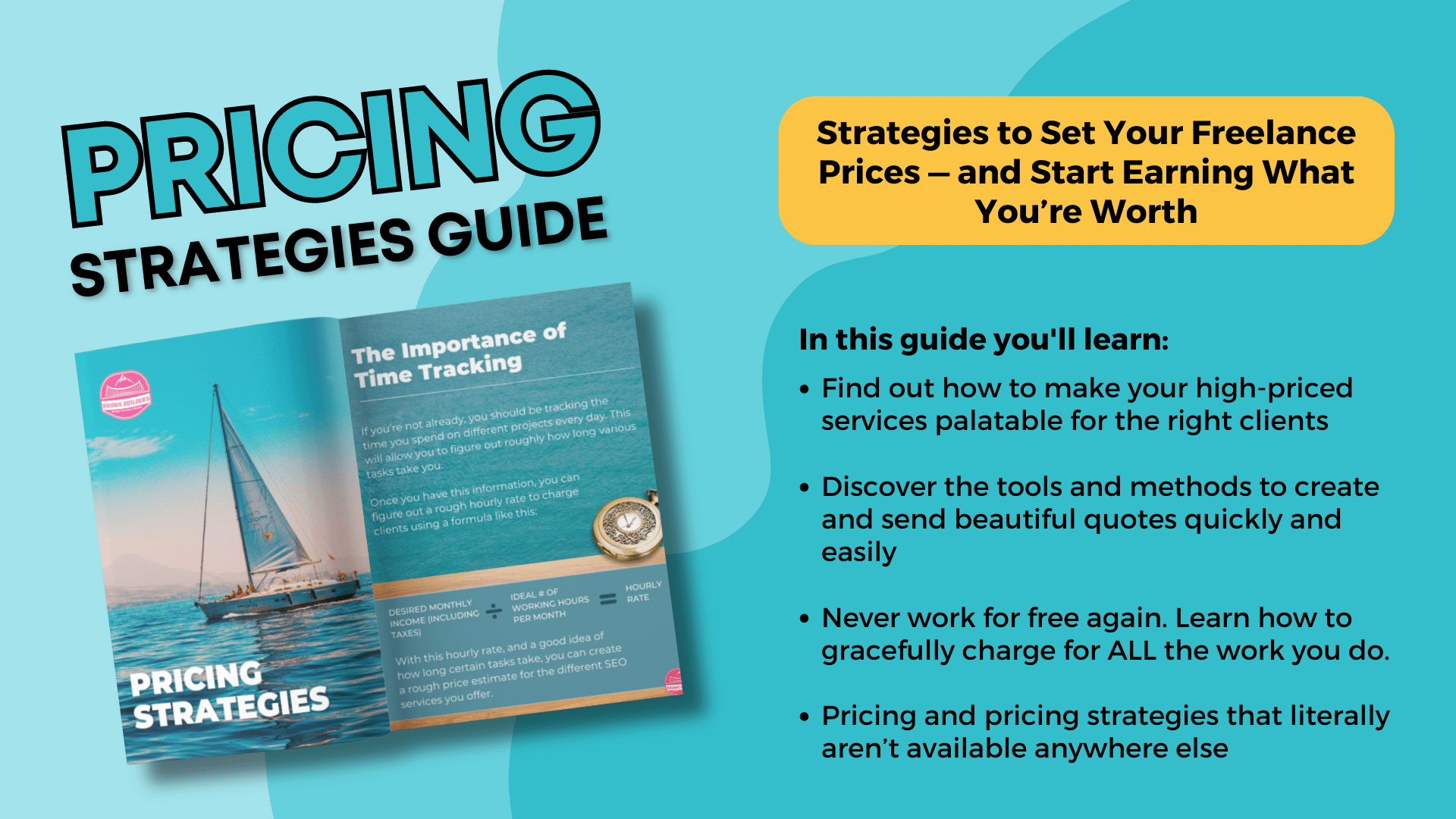7 Fatal Freelance Mistakes: How to Avoid Crashing Your Career
When I lived in Australia, a close friend of mine chartered a boat to sail around the Whitsundays for his 30th birthday. It was surprisingly affordable, and I didn’t find out why until we got there—we’d be setting sail completely on our own, with only one hour of training, for a week—in the dangerous waters off Northern Queensland.

Looking back, it was a great time. But boy were there some tough moments along the way.
The night we spent banging against buoys and rocking so hard we were seasick. 🤢
The fact that we were swimming in the same waters as the deadly irukandji jellyfish. 😱
In fact, it’s a wonder we survived. And to be honest, when I think about the early days of my freelance career, I get the same feeling. It was exhilarating and terrifying all at once, and I’m both shocked and proud I made it through.
Fortunately, I had more support available during my freelance journey than I did on that catamaran. I found other freelancers, and more than one wonderful business mentor, to guide me through.
But even with all that help, I still made plenty of mistakes.
Over the years, I’ve figured out how to spot these mistakes and prevent them from happening, but that took lots of trial and often (humiliating) error.
Now, as a freelance coach and mentor myself, I see plenty of freelancers who are about to make the same mistakes I made—the ones that could have easily derailed my career. I take great joy in helping other freelancers right the ship, and make it to the next port safely. (That’s the last sailing metaphor, I promise ⛵.)
So let’s dig into it. Here are the top 7 mistakes that are truly freelance career-killers, if left unchecked. And of course, my hot tips on how to avoid them.
Mistake #1: You’re too shy to talk about what you do

I’m listing this one first, because it’s the one I’ve struggled with the most consistently over my career.
As a freelancer, no one is around to do your marketing for you. It’s entirely up to you, which means you have to be vocal—really, really vocal—about what it is you do.
Because there is no freelancer lead generation channel more effective than word-of-mouth referrals. And the word of mouth has to start somewhere.
If you aren’t used to talking loudly and proudly about what you do, I get it—it’s not natural for most people (myself included). But it gets easier the more you do it, because you learn what resonates with people and gets you the kind of response you want.
Of course, when you’re at a party and someone asks you, “What do you do?”, you don’t want to sound like some pushy marketing robot. But if you are talking to someone who is genuinely interested in what you do, it’s good to have a compelling description of your work in your back pocket.
“I’m a graphic designer,” is a good one-liner, but isn’t gonna get you any new business.
But try this: “I’m a graphic designer, but my specialty is helping businesses rebrand and find a new look their audience loves.” It’s simple, not bragging, but you’re much more likely to open a conversation with this little nod to your skill niche.
👆 Say this kind of thing to enough people, and eventually someone will think, “Oh, I know someone who is going through a rebrand…” and voila, new prospect.
You can really amplify this lead generation strategy by actively posting useful content that reminds people of what you do. LinkedIn is my favorite place to do this—and I have a full guide to LinkedIn for freelancers here.
If you find yourself struggling to put your service into words that make sense and show value, you’re not alone. This is something I often help clients with in my mentorship program.
Working with a mentor is one way to gain confidence in talking about what you do, but the key is to find a way to practice talking about it. This can be with friends or family who are willing to roleplay with you, or you can try writing it out or practicing it in the mirror.
And if you want, we can hop on a free 20-minute consultation call to talk about your pitch. For real—you can book it right here.
Mistake #2: You aren’t predicting your income

Keeping track of income is easy when you get the same paycheck every single week.
But as freelancers, that’s not likely to happen—and the first year or two, income can be really chaotic.
But finding a way to predict income, at least a few months in advance, can make a huge difference in your business health and your quality of life.
Why? Because it takes time to market, pitch, and win over clients, and it’s not uncommon for it to take a few months of dedicated marketing to get a new client on board.
So if you are looking at your income in January, and see there’s a big dip coming in April, you know you need to ramp up your marketing efforts soon to prevent that dip from making life difficult.
You can see an IRL example of what this looks like in my 2022 annual roundup:
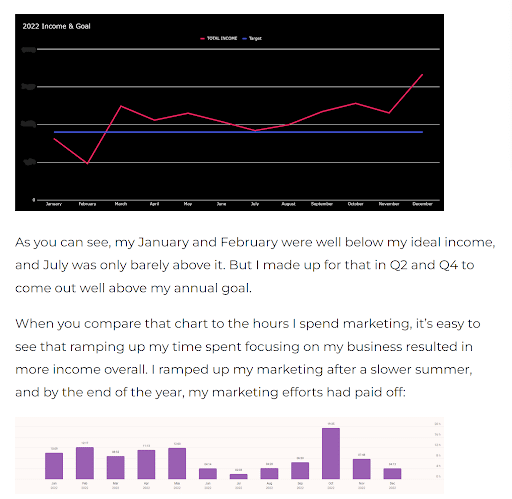
This is why having a tool to predict your income is vital. I personally use a tool called Moxie to keep track of income trends and plan ahead. With Moxie, I can see when there might be a dip in my income on the horizon, and it allows me to adjust my strategy accordingly. Here’s what it looks like:
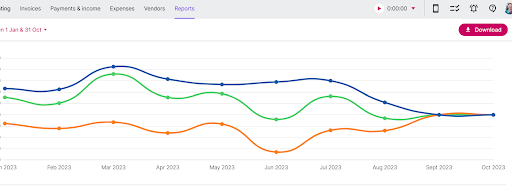
Aside from keeping your anxiety levels down, predicting your income is also vital for tax payments. Your quarterly tax payments will depend on how much money you anticipate to make by the year’s end—if you don’t know roughly how much you plan to make, your taxes could be a real headache by the end of the year.
Take it from me—you don’t want to fall behind on tax payments. So be vigilant, and try as best you can to gaze into the future. 🔮
Mistake #3: You aren’t actively building a “freelancer referral network”
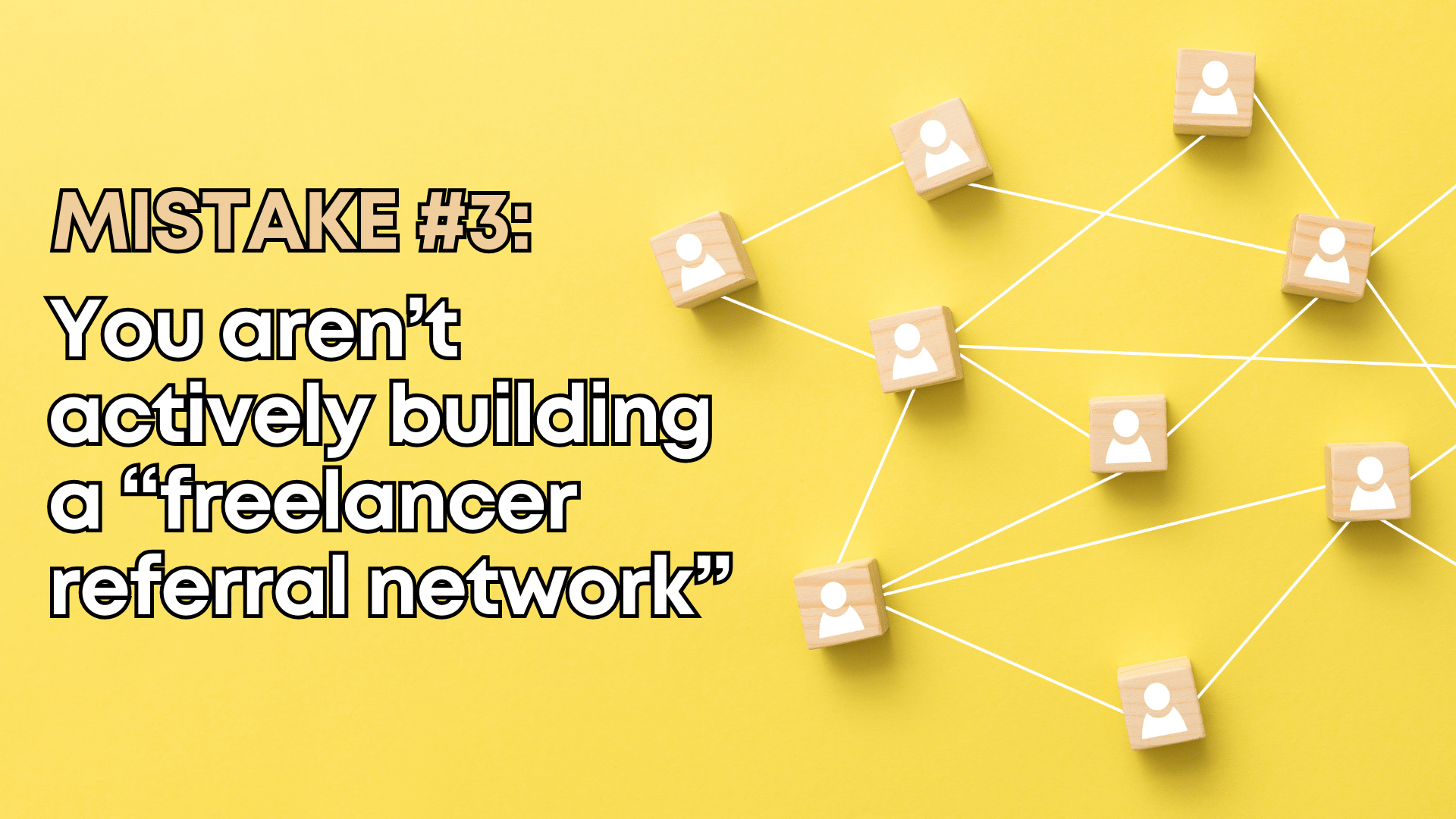
One of my favorite things about being a freelancer is the community. There are thousands of people all over the world who fall into the freelancer-solopreneur-digital-nomad realm.
And like any good community, we have each other’s backs. Other freelancers will offer you solid advice, give you resources, and generally lend you a hand up.
Most healthy freelancers don’t see other freelancers as competition, even those that work in the same industry and offer the same sorts of services. Instead, they see other freelancers as opportunities—people who can introduce them to other clients, share insider tips, and pass on overflow work or work that isn’t quite the right fit.
So how do you go about building up a freelancer referral network? First, you need to make yourself visible. This means posting on social media, joining groups, and interacting frequently and genuinely.
I’m part of a number of online groups—my personal favorite is Top of the Funnal (TOFU), hosted by my friends over at Yes Optimist. It’s free to join and a really thriving community. I also enjoy The SEO Community Slack channel, and I’m part of a few LinkedIn and Facebook groups too.
You’ll find your own groups by searching through Google, social media channels, and asking around. But as you join these groups remember a few key tips:
✅Always be friendly and helpful
✅Introduce yourself to the group and explain what you do
✅Comment, like, and reshare other’s posts in genuine ways
✅ Asks questions and seek advice
✅ Send DMs to people who intrigue you
❌ Don’t push your products and services on people
❌ Don’t beg for work or appear desperate (but you can be open and honest about where you’re struggling)
❌ Don’t get argumentative, contrarian, or nasty
In general, play nice, be as outgoing as you can be, and regularly remind people what you do. The network will grow out of this foundation, and soon you’ll be getting referrals knocking on your digital door.
Mistake #4: You don’t collect a deposit when you start work
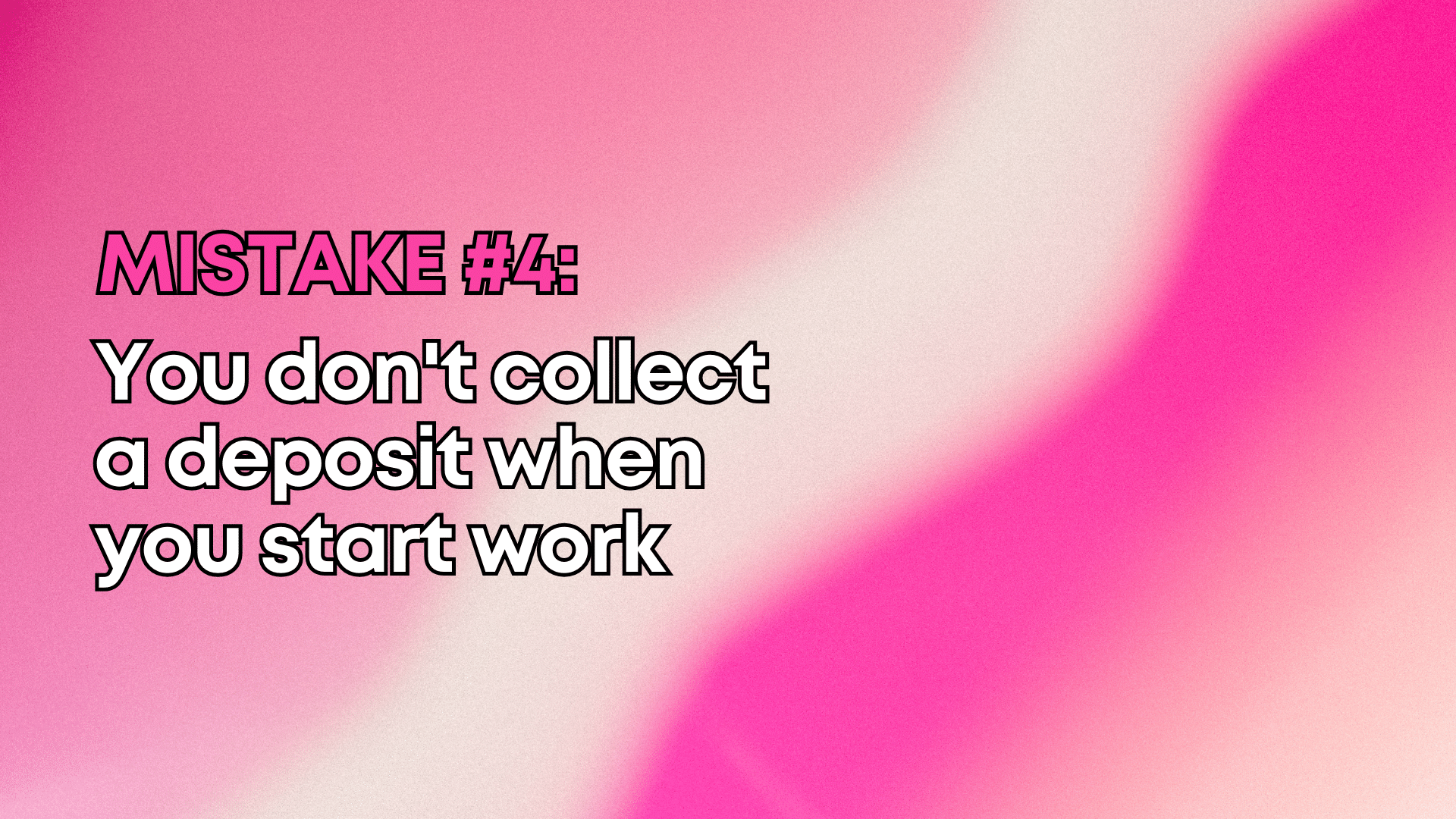
$4,000. Four thousand $@&$&@ dollars!
That’s how much it cost me to learn the importance of taking a deposit before you start work.
See, in 2021, I took on a freelance content strategist role at a startup. This job came to me as a recommendation from a former-freelancer (and personal friend) who’d just been hired full-time. (Side note: I met this guy through one of the freelance communities I’m in. Though this particular client didn’t work out, you can see how referrals come through these networks!)
It was a straightforward $4,000 project. I’d put together the strategy, present it, and walk away—my friend would take care of execution.
For the most part, my friend was my client, and things were peaceful and pleasant. But soon, my friend started to complain about his boss on his weekly calls with me, and by the time I was almost ready to present the strategy, he was quitting because of the toxicity.
By this time, I’d had a few interactions with the CEO himself—enough to know I wouldn’t extend a contract with him, even if he wanted more work.
Finally I got him on the phone to go over the strategy, and he had feedback—totally fine. But when I told him that I wouldn’t take care of the feedback until my invoice had been paid, and also mentioned that I wouldn’t be able to work with the company after this project ended, he flew off the handle.
He called me names, told me I was going to regret this decision, and logged off the call.
I never heard from him again. And of course, I never got the payment.
I was furious. And I did everything in my power to get that money back.
First I locked all of the work I’d done for the company and made it in accessible. (Thanks Google Drive.)
Then I emailed the CEO relentlessly, along with other employees at the company. Total silence.
I even contacted a lawyer, and he taught me that despite contrast and written agreements, it’s very, very hard for a freelancer to get their money back. Even if you win a small claims suit, it doesn’t mean the company will pay—and a wealthy company with lots of lawyers could countersue you into oblivion.
So I just had to let it go. But I made a promise to myself that it would never happen again, and started charging 50% up front, every time I take on work. No matter how big or small the price tag, even if it’s someone I know who’s hired me—half up front, or no work starts.
This is the most basic and straightforward pricing strategy, but I have lots of them that I depend on to keep my income where I want it. I’ve put the best of the best pricing strategies in a guide right here:
Mistake #5: You aren’t thinking about taxes when quoting
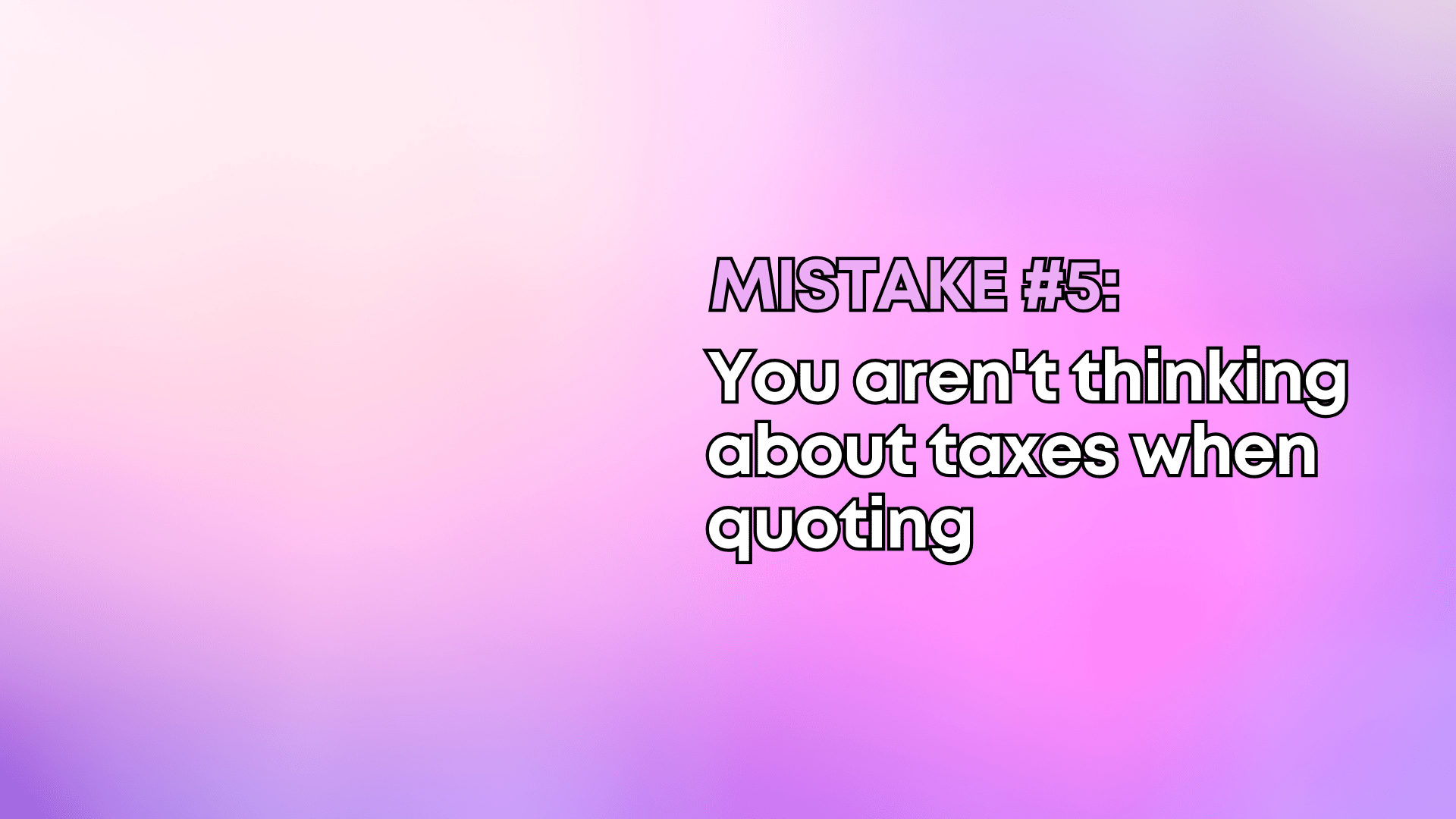
“Know your worth, then add taxes.”
That’s not just some catchy line; it’s one of my go-to mantra for freelancers. I love this quote for two reasons.
First, it encapsulates the concept of “value pricing.” This is when you charge clients based on what your work is worth, rather than some arbitrary hourly rate.
My pricing strategies guide goes deep on how you can work out the right prices, based on value. And it also goes over the important of tax—something often overlooked by early freelancers because:
- It’s boring
- It’s complicated
- It’s painful
Failure to charge for tax on top of your services will only result in two possible scenarios. Either you’ll end up owing a lot of money at the end of the year, or you’ll have less pocket money than you want.
If you’re a digital nomad like me, things get even more complicated. But no matter your situation, you need to have a solid plan for setting aside federal and state taxes, making quarterly payments, and using your expenses to maximize your income.
If that sounds impossible to you, then the only option is to invest in a professional who can help you with this. And there are plenty out there—ask other freelancers for recommendations to find people who know about our unique situations.
Beyond that, you should be using software to help you keep track of all this. Moxie does a great job with expense tracking, hooking up to your bank accounts. It doesn’t calculate tax for you, though other services like Quickbooks and Hellobonsai do.
Mistake #6: You aren’t charging for 100% of your time
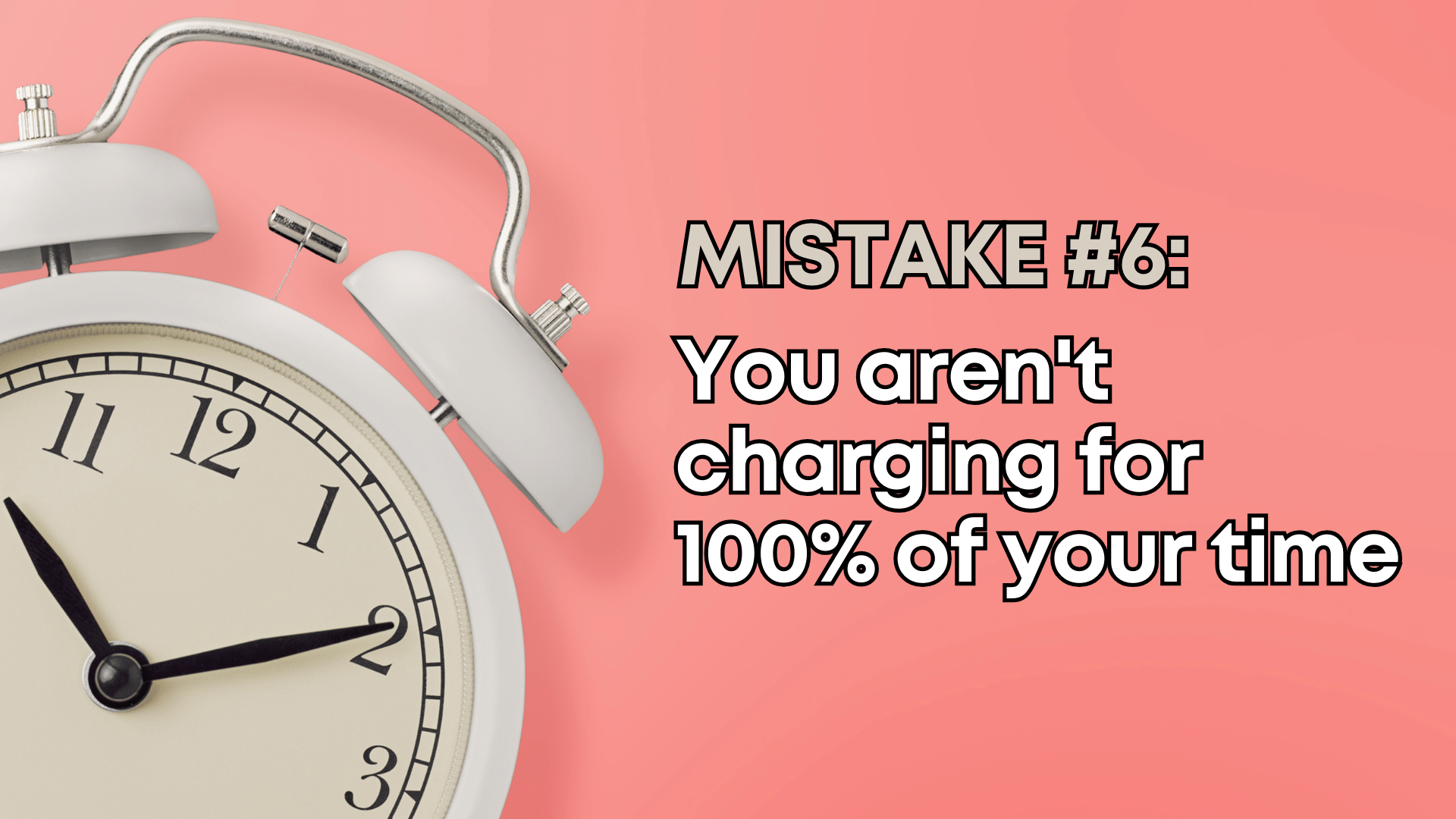
In a typical salaried 9-to-5 job, every minute on the clock counts. Whether you’re answering emails, organizing tasks, or deep in thought about a strategy, you’re paid for it.
In freelancing, the rule should be the same. Every bit of your time is valuable, and you should be compensated for it. But unlike a traditional job, it’s up to you to make sure you’re compensated for all that extra work.
There are lots of “hidden” admin tasks freelancers have to take care of on behalf of clients. From reading and responding to email, organizing deliverables, sending invoices, building quotes, providing updates and reports—there’s a lot of work to be done, and since it’s work, someone needs to pay you for it.
That someone is your clients—and you can get them to foot the bill for this extra time in two ways.
Option 1: You are explicit about it. You add a management fee on to your invoices, and explain what the charge is for.
Option 2: You are quiet about it. After you draft up your quote, and add taxes, you add an additional fee to cover admin costs, but you don’t spell that out for the client.
Either option works, but option 2 is really only an option if you have already broken free from the idea of hourly pricing (see Mistake #5).
As an added bonus, your admin fee is a great starting point for negotiating pricing with your clients. If they feel that the price is too high, you can offer to drop your management fee, and drop some management tasks along with it, (like reducing from monthly to quarterly reporting, or replacing weekly calls with weekly email summaries).
Mistake #7: You aren’t using your “me time” to do nothing
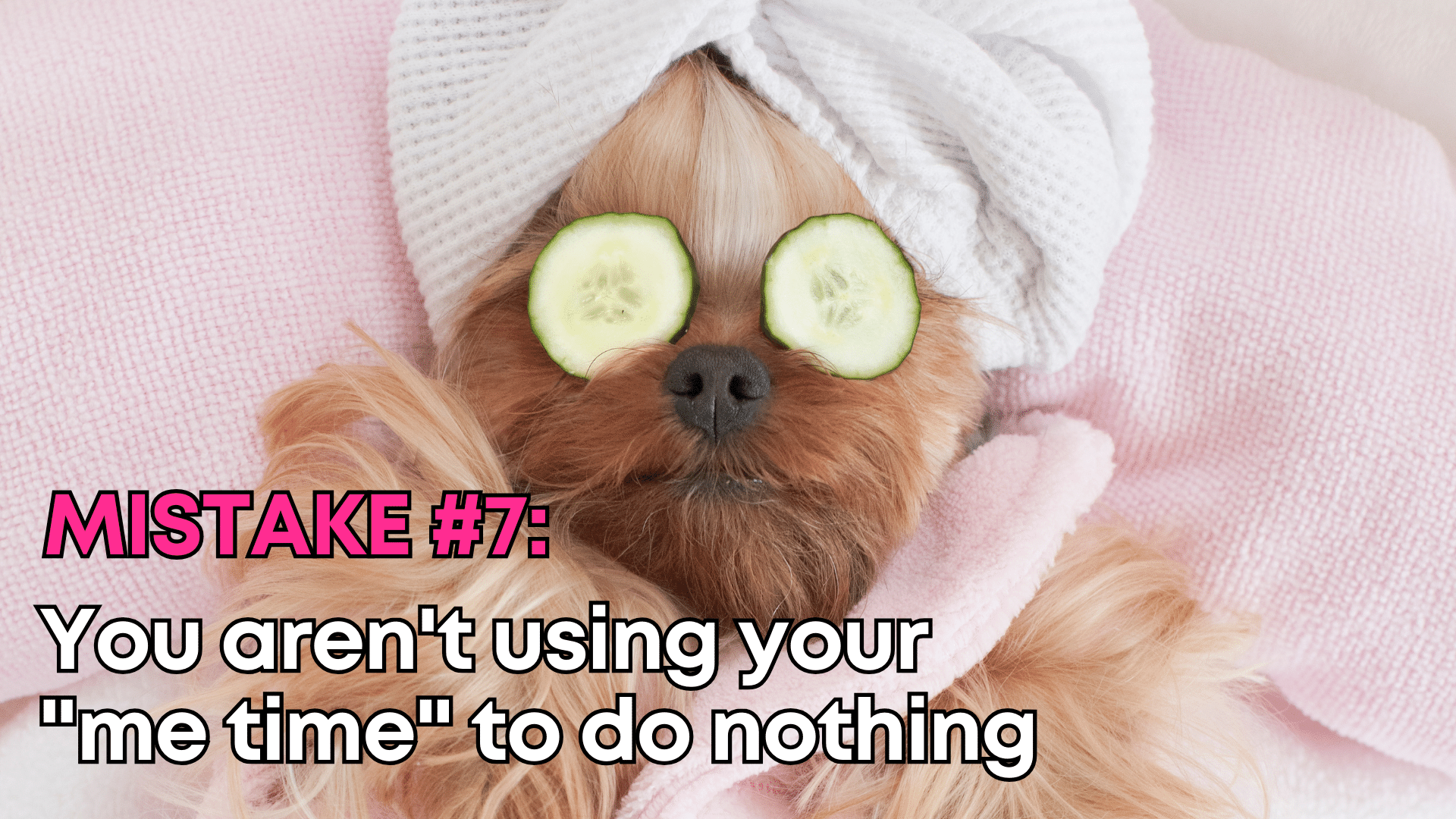
I’m not going to spend my last point harping on about the importance of work-life balance, because it’s been said to death.
But I will say this: As freelancers, the line between “work” and “life” can be very blurry. There’s no office to leave, no work phone to shut off on weekends, no HR department to tell you when you need to take time off.
On top of this, you’re running a business that will always need something. There will always be client work that needs your attention, website changes to make, promotions to run, email campaigns to write, influencer opportunities to pursue.
And because there is no such things as “done” when it comes to running your freelance business, it’s easy to start to feel guilty when you take time for yourself.
Here’s how this often sounds in my own head:
I’ll let myself play Zelda for 30 minutes, then I need to get back to work.
I didn’t get everything done this week, so I really should stay home Saturday and finish it up.
Other freelancers have a lot more going on than me—I don’t deserve to take time off until I’m like them.
Blech! These thoughts are so toxic, especially when comparison (the thief of joy) comes into play.
If you’re considering life as a digital nomad, expect this problem to follow you around the globe. For me, I start to feel guilty if I don’t fill every free moment with some sort of adventurer’s fantasy—a trip to a museum or a tourist attraction, or a long walk exploring the city.
Yes, I am a digital nomad because I love exploring new places. But even digital nomads need to learn how to spend time staying at their AirBNB, doing absolutely nothing but what is truly enjoyable and meaningless.
So that’s it—those are the big mistake I made as I was starting my freelance journey, the ones that very nearly could have ended me. I hope this article helps you avoid these same missteps in your career.
And of course, I have lots more resources and advice to help you with all that.
You can check out all my free resources right here, or sign up for my mailing list to get my best tips and advice on SEO and freelance, right in your inbox.


